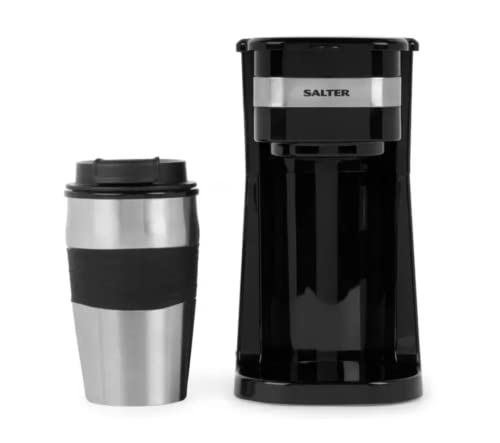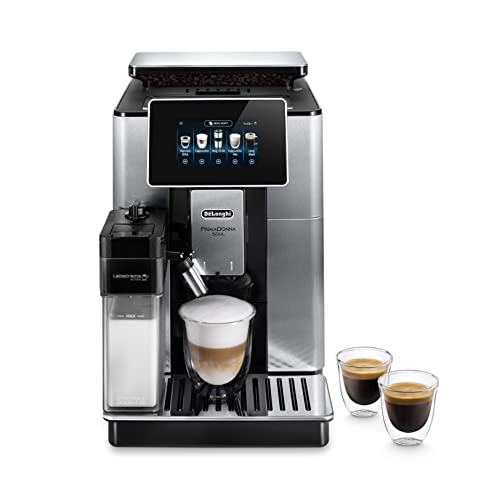20 Myths About Coffee Machine: Busted
페이지 정보
작성자 Lon 날짜24-05-01 10:02 조회30회 댓글0건본문
 How a Coffee Machine Works
How a Coffee Machine WorksA coffee maker makes it easy to brew the perfect cup of java at home. They automatize the process and take charge of the entire process.
No matter if you're a lazy person who wants to get a quick boost or a coffee lover there's a machine that's suitable for everyone. Learn how they work to make the perfect cup.
The Reservoir
You pour the water into a reservoir and it is then pumped through your coffee maker. The coffee grounds are added into the portafilter, and then tamp them down. Then you turn on the machine.
Drip coffee machines are a standard and are a time saver for those who need coffee that is ready when they get up. The machine comes with a variety of features that let you personalize your experience, such as an adjustable timer and the ability to use ground coffee or capsules.
Keep your reservoir clean to avoid the accumulation of limescale. This can lead to mineral deposits that alter the taste. After every brewing session, it's important to empty and refill the reservoir with clean water. Fill the reservoir with warm white vinegar to get rid of the smell of vinegar and stains. Brew the mixture, then discard the vinegar-water mixture and rinse the reservoir, Drip coffee machines portafilter, and K-cup pod holster with hot water and dish soap in the sink.
The Cold-Water Tube
The cold-water tube is responsible for bringing clean purified water to the heating chamber when it's time to brew. When the water is in the heating chamber it is pumped up to the showerhead, from where it is sprayed onto the coffee grounds. This is a way of infusing the coffee grounds, extracting their flavor and then dripping into the carafe below.
If you hear a click, this could be a sign of a blockage in the tubing. Typically, these issues can be solved by cutting a piece of water line that is standard in household tubing and attaching it to the coffee machine inlet fitting, and using the appropriate adapter if required.
The one-way valve is located in either the opening for the bucket or the aluminum tube, and is responsible for pulling into cold water when the water reservoir is empty and release boiling water back into the tubing once it's ready to use. If the valve is clogged with dirt or mineral deposits, it will cause the clicking noise that's so evident and irritating. Luckily, it's easy to get rid of using a thin instrument or toothpick.
The Hot-Water Tube
A small aluminum tube connects your coffee maker's reservoir to the showerhead faucet (also called the showerhead). When you press a button to begin making your coffee the heating element is turned on and water starts to flow through the machine. The tube is insulated to keep the water hot as it travels from one section to the next.
Sensors cycle the water off and on when it is in the reservoir to maintain the ideal temperature for coffee extraction of 195-205 degrees F. Certain machines come with a built-in temperature probe that ensures the water is always at the ideal temp.
Then, the water transforms into steam, which rises through the hole in the bucket and passes over the coarse coffee grounds in a basket for filtering on the top of the machine. The heated water repeatedly absorbs the coffee grounds, enhancing their flavor. It then drips into the carafe. Certain models come with a pre-infusion system which dries the grounds with water at low pressure before it gets to full pressure, improving the extraction process.
The Faucet
Coffee machines are clever little things that do quite a bit of work to turn the water you pour into them into a hot cup of coffee. Knowing a little about how they function can help you understand why they're so popular and why it's crucial to keep them clean and well-maintained.
The coffee machine faucet is showerhead that sprays water from the hot-water tube onto the coffee grounds. The water is sprayed onto the coffee grounds by a perforated disk made of plastic, which is known as the drip area.
Certain models with more advanced features have a built-in coffee grinder so that beans are freshly ground prior to entering the heating chamber. You can program the machine to brew your cup when you wake up to ensure that it's ready when your alarm is set. They can also be fitted with an app that allows you to select a drink and then alter the ratio of coffee and milk.
The Drip Area
The coffee machine is easy to use, but it does a lot to turn water into delicious cups. This section contains all the parts of the machine that are responsible for its operation.
There's a reservoir bucket which holds the water you pour into at the beginning of the cycle, and a white tube that runs from the bottom of the reservoir to the drip area. The tube's function is to carry hot water which will be sprayed over your lawn.
Next, there's a shower head that receives the hot water that is carried by this tube, and then sprays it over your beans that you've ground. Here is where the brewing begins and the flavor of your brew takes shape. You can also alter the final result of your brew if you alter the brewing temperature and time (some coffees require longer brew times or higher temperatures to extract their full flavors). The resulting product will run through a small piece of plastic called the drip zone, and then into your cup.
The Heating Element
Heating elements are found in nearly every coffee maker. It is a coil of resistive cables that gets heated when electricity flows through it. The coil is protected by a switch that turns the power off and on. The coffee maker also has components like sensors and fuses that cut off the current when required.
The heating element is attached at both ends to the aluminum water tube. The heating element are sandwiched between the aluminum tube, and a warming plate coated with white heat-conductive grease.
Drip coffee machines can brew a single cup at a given time, which is perfect for those who want quick and easy coffee without the hassle of filling a carafe. They are also great for people who do not drink a lot of coffee or for families with time-stamps for waking up. However, if you prefer stronger drinks like lattes and cappuccinos espresso machines are the way to go. They make use of pressure to push water through the grounds, which removes more of the oils that give the flavor of your beverage.
The One-Way Valve
A one-way check valve is an instrument that allows fluid to only flow in only one direction. This valve can be found within the hole of the reservoir or in the aluminum tube that holds the water underneath the heating element that is resistive. This valve stops cold water from flowing into the bucket, and also causes bubbles of hot water to rise up the tube to reach the faucet.
The one-way valve may be blocked. This can happen if the machine is used for a prolonged time or if minerals accumulate within the valve. This could lead to the professional coffee machines maker not making any coffee. If this happens, clean the valve by pouring hot tap water over it. Take off the base of the coffee maker.
The manual coffee machines machine is a clever device that can turn an assortment of grounds and a cup of water into a piping hot cup of coffee. There are many advanced features that are available on these machines to give you more control over your drink.
The Power Cord
 The power cord connects to the wall to supply the energy the machine requires to run. It is black and grounded using a female C13 connector that can be plugged into the standard US outlets. It is possible to see inside the coffeemaker a specific high-temperature wire which connects the switch as well as the thermostat controls for both the carafe and boiler. This wire is protected by glass braids of white or similar. It's not a surprise that the designer decided to arrange the wiring in a way that heat is kept away from the power cord.
The power cord connects to the wall to supply the energy the machine requires to run. It is black and grounded using a female C13 connector that can be plugged into the standard US outlets. It is possible to see inside the coffeemaker a specific high-temperature wire which connects the switch as well as the thermostat controls for both the carafe and boiler. This wire is protected by glass braids of white or similar. It's not a surprise that the designer decided to arrange the wiring in a way that heat is kept away from the power cord.댓글목록
등록된 댓글이 없습니다.



















 광송무역
광송무역
 070-7762-8494
070-7762-8494

